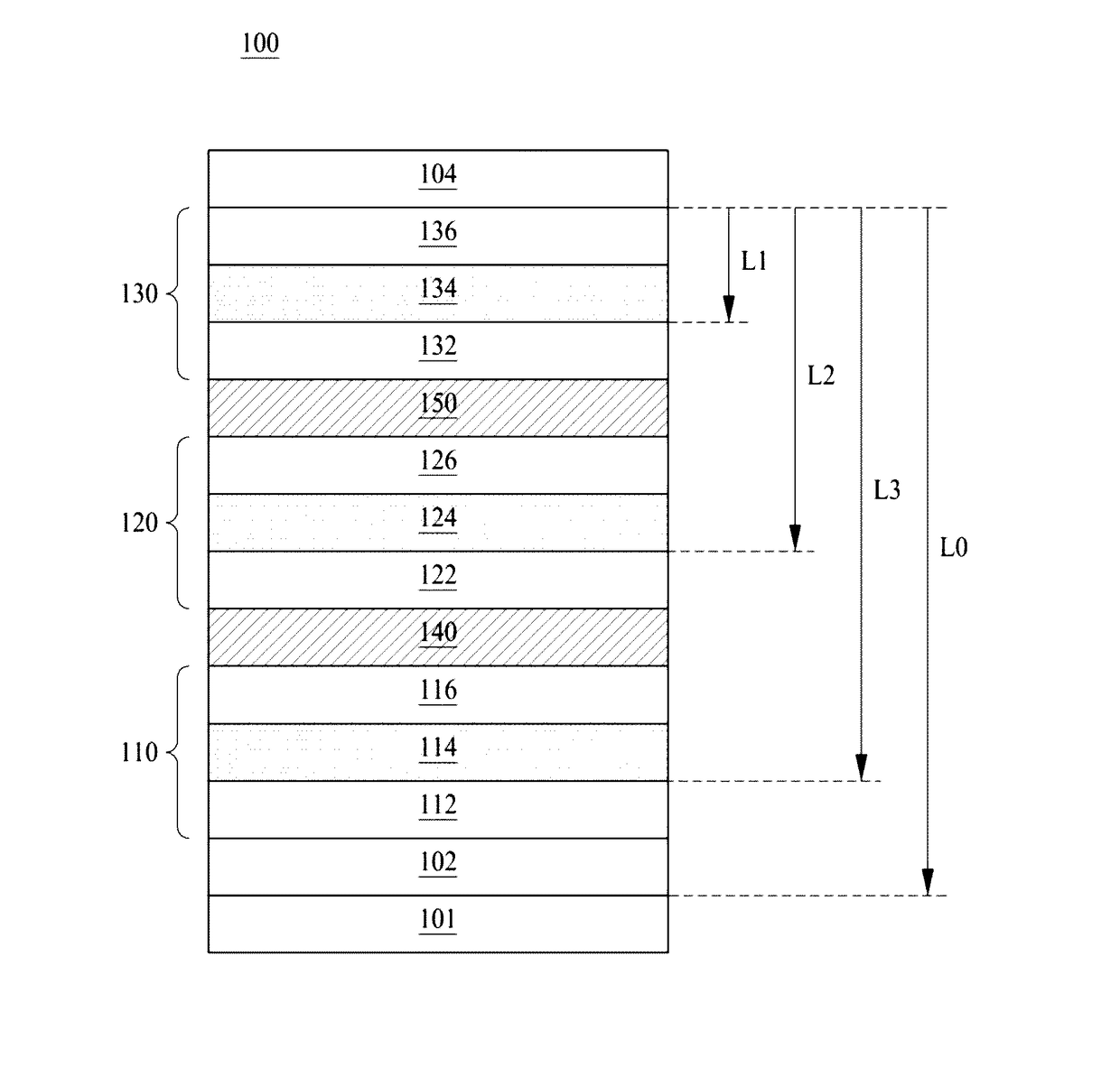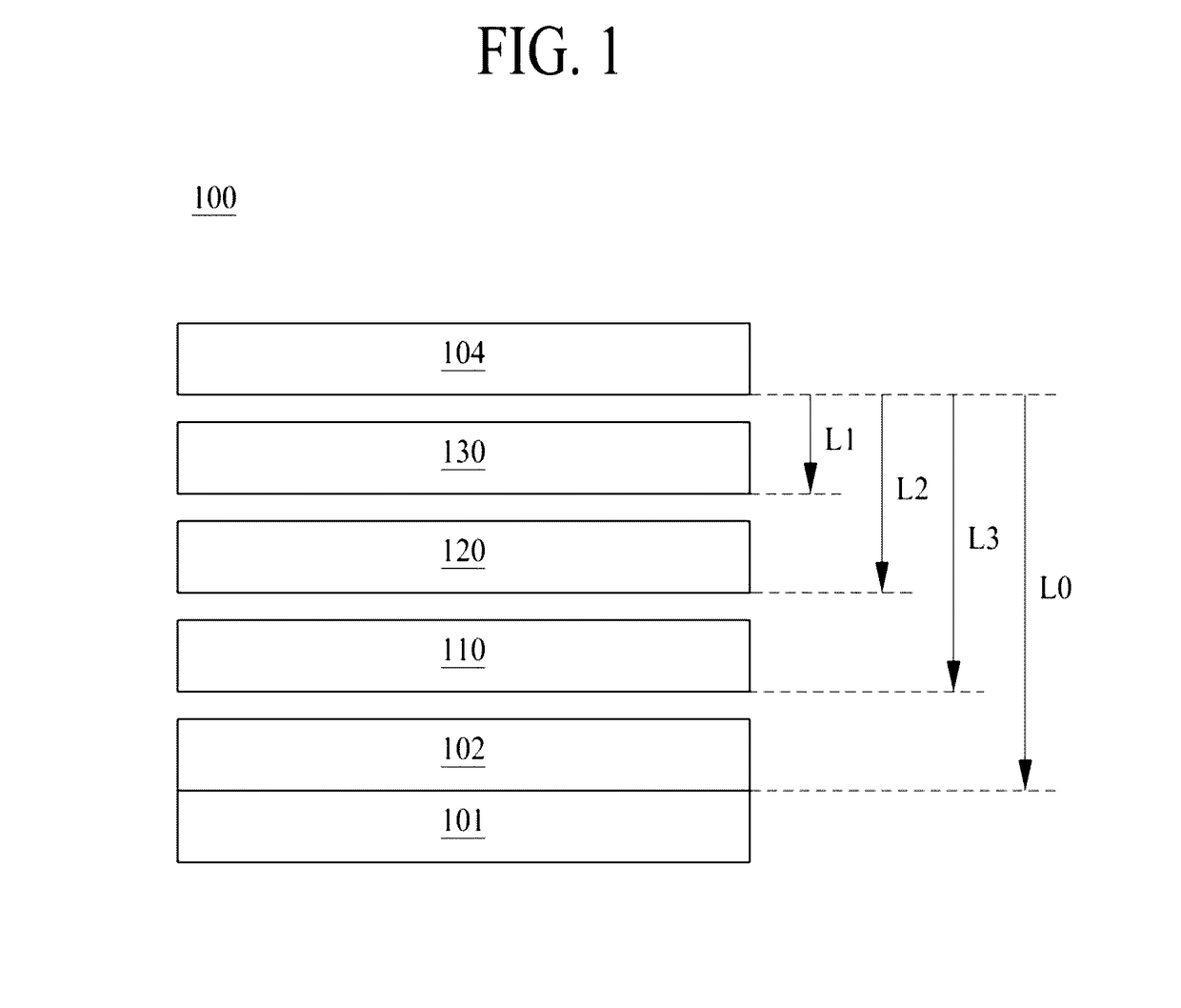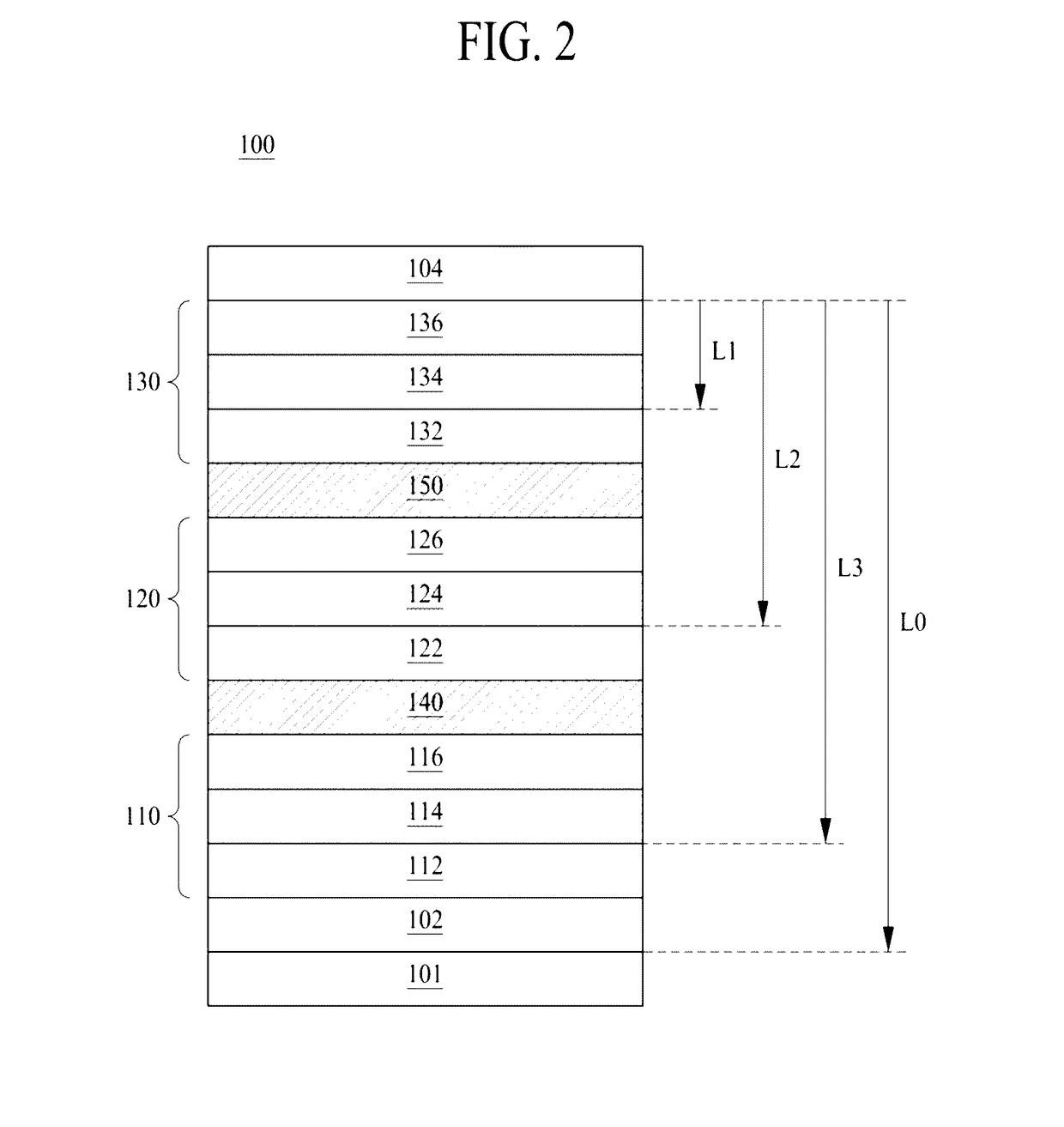White organic light emitting device
a light-emitting device and organic technology, applied in the direction of semiconductor devices, basic electric elements, electrical appliances, etc., can solve the problems of limited emission characteristic and lifetime, inability to show sufficient luminance of blue emission layer formed of fluorescence material in comparison with phosphorescence material, incomplete transfer of energy, etc., to achieve the effect of enhancing emission efficiency and lifetim
- Summary
- Abstract
- Description
- Claims
- Application Information
AI Technical Summary
Benefits of technology
Problems solved by technology
Method used
Image
Examples
first embodiment
[0137]FIG. 2 is a diagram illustrating a white organic light emitting device according to the present invention.
[0138]A white organic light emitting device 100 illustrated in FIG. 2 includes first and second electrodes 102 and 104 and first to third emission parts 110, 120 and 130 between the first and second electrodes 102 and 104.
[0139]Each of the first electrode 102 and the second electrode 104 may be referred to as an anode or a cathode.
[0140]A position L0 of the first electrode 102 is set to 4,500 Å to 6,000 Å from the second electrode 104. Since the position L0 of the first electrode 102 is set, emission peaks of emission layers configuring the first to third emission parts 110, 120 and 130 are located at a specific wavelength, and light having the specific wavelength is emitted, thereby improving an emission efficiency of the emission layers. The first to third emission parts 110, 120 and 130 have the EPEL structure that has a maximum emission range in emission areas of the f...
second embodiment
[0250]FIG. 5 is a diagram illustrating a white organic light emitting device according to the present invention.
[0251]A white organic light emitting device 100 illustrated in FIG. 5 includes first and second electrodes 102 and 104 and first to third emission parts 110, 120 and 130 between the first and second electrodes 102 and 104. In describing the present embodiment, descriptions on elements which are the same as or correspond to the elements according to the preceding embodiment are not repeated. A position of the first electrode 102 is set to 4,500 Å to 6,000 Å from the second electrode 104. Also, emission peaks of emission layers configuring the first to third emission parts 110, 120 and 130 are located at a specific wavelength, and light having the specific wavelength is emitted, thereby improving an emission efficiency of the emission layers. The first to third emission parts 110, 120 and 130 have the EPEL structure that has a maximum emission range in emission areas of the ...
third embodiment
[0339]FIG. 8 is a diagram illustrating a white organic light emitting device according to the present invention.
[0340]In the present embodiment, emission positions of emission layers are set from a first electrode, and may be set from the first electrode depending on a device design.
[0341]The position of the second electrode 104 is set to within 4,500 Å to 6,000 Å from the second electrode 104. Also, emission peaks of the emission layers configuring the first to third emission parts 110, 120 and 130 are located at a specific wavelength, and light having the specific wavelength is emitted, thereby improving emission efficiency. Also, the first to third emission parts 110, 120 and 130 have the EPEL structure that has a maximum emission range in emission areas of the first to third emission layers.
[0342]The first emission part 110 may include a first HTL 112, a first EML 114, and a first ETL 116, and which are disposed on the second electrode 104.
[0343]Although not shown, an HIL may be...
PUM
 Login to View More
Login to View More Abstract
Description
Claims
Application Information
 Login to View More
Login to View More - R&D
- Intellectual Property
- Life Sciences
- Materials
- Tech Scout
- Unparalleled Data Quality
- Higher Quality Content
- 60% Fewer Hallucinations
Browse by: Latest US Patents, China's latest patents, Technical Efficacy Thesaurus, Application Domain, Technology Topic, Popular Technical Reports.
© 2025 PatSnap. All rights reserved.Legal|Privacy policy|Modern Slavery Act Transparency Statement|Sitemap|About US| Contact US: help@patsnap.com



